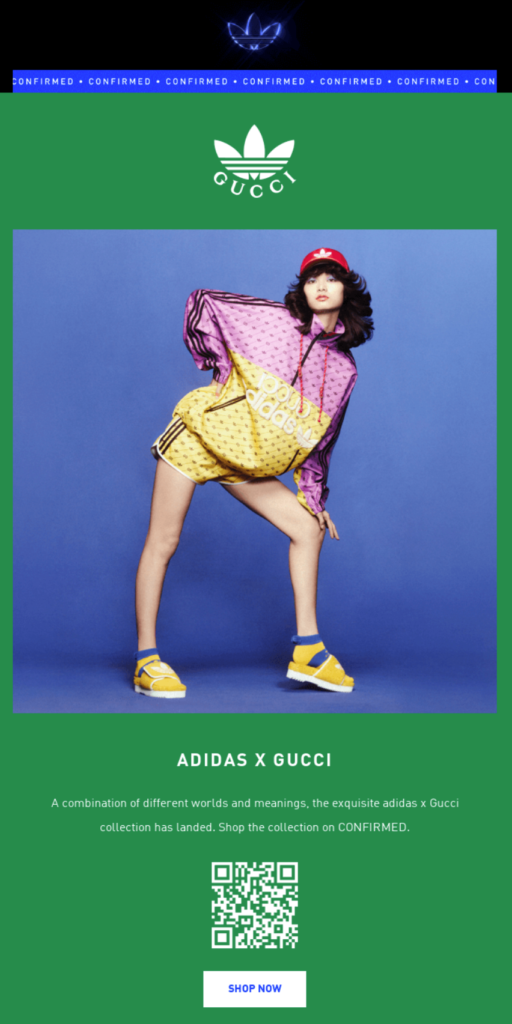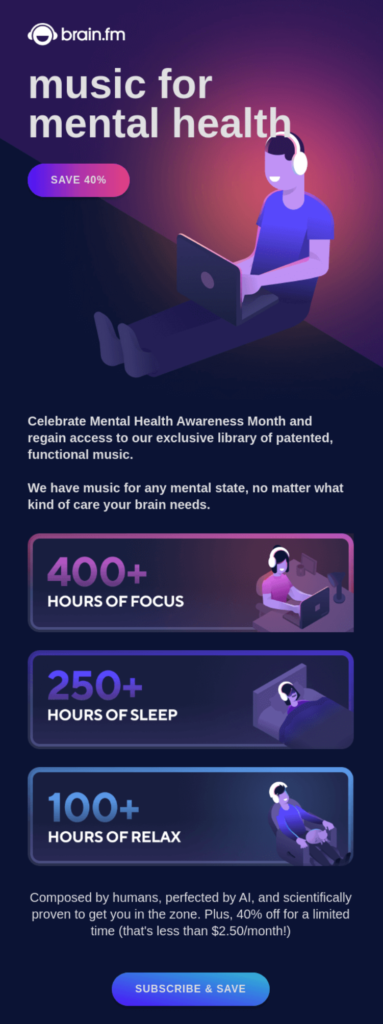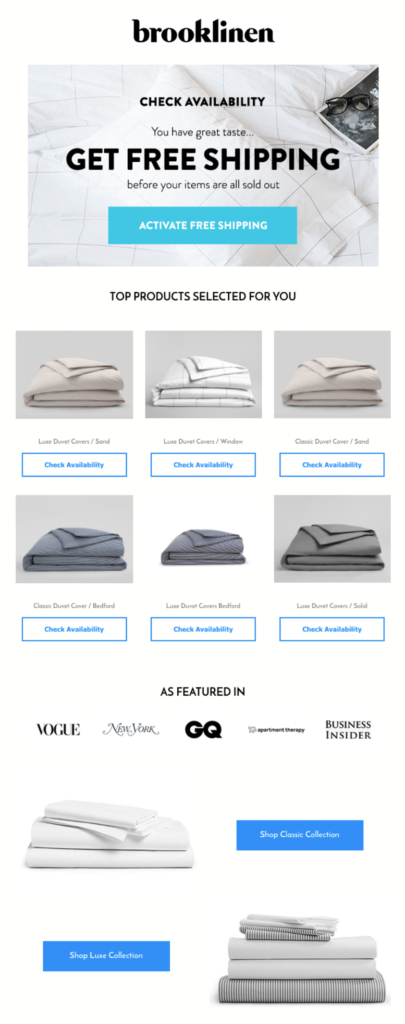In our dynamic business landscape, organisations must continue discovering new ways to move past one-size-fits-all email marketing strategies to engage with their audience effectively. Email segmentation can help your business create hyper-personalised email content to tailor each customer journey.
In this article, we’ll delve into email marketing segmentation strategies, how to segment email lists, and best practices to follow.
What is email segmentation?
Not all email subscribers are the same. Each distinct category of customers has a unique set of interests, needs, and characteristics that your business must cater to.
Email segmentation refers to the practice of dividing your overall list of email subscribers into different segments based on specific tracking criteria. A strategic approach to email list segmentation can help you connect with your audience on a deeper level by targeting their unique needs, preferences, and consumer behaviour. It can help you effectively address the different issues and motivations faced by customers from different segments.
By unlocking the true potential of your email campaigns, effective segmentation can help improve open rates, click-through rates, subscriptions, and customer loyalty to your business.
Benefits of email list segmentation
Higher engagement
Dividing your audience into clear segments based on criteria such as demographics, geographic location, or preferences can provide you with clear insight into what types of content will resonate best with each reader. Making your content more relevant can improve the quality of your customer interactions, leading to increased loyalty and engagement.
Reduced unsubscriptions
A critical reason subscribers may opt out of your email communication initiatives is that they feel your content does not adequately resonate with their specific needs. However, segmentation can enable your business to identify the content they can actively engage with and appreciate.
Enhanced customer loyalty
Building meaningful relationships with your audience is the key to promoting customer loyalty. Personalisation makes your audience feel understood throughout each stage of the customer journey. Customers who view your business as a trusted source of accurate and relevant information are much more likely to return for more. Over time, they may even become passionate advocates for your business and its value proposition.
Higher conversion rates
Segmentation can help transform email content into a vehicle for delivering meaningful value for your subscriber’s needs. As the trust and loyalty between your brand and its audience increase, so does the probability of completed conversions. This can also be paramount for increasing your campaigns’ return on Investment (ROI).
Campaign optimisation:
Effective resource allocation can make or break the overall success of a campaign. Email segmentation can allow your business to tailor campaigns to precisely align with the needs and interests of each segment. This can be extremely beneficial for wasting resources and ensuring that valuable organisational resources are not directed toward segments that may not be interested in your products or services.
How to segment your email list
1. Demographics
One of the most effective email list segmentation best practices is creating segments based on different demographics. Consider gathering the following customer demographic information:
- Age
- Segmenting your email subscribers based on different age groups can help tailor content according to the interests and communication styles of different generations of readers.
- Gender
- Dividing your email lists according to gender may be useful for helping your business develop targeted messaging that appeals to their distinct needs and preferences.
- Job Title
- Email content may resonate differently for viewers from different professional roles. Executives, managers, and freelancers may all value different types of content and information.
Take the example below. Segmenting their email list based on gender allowed Adidas and Gucci to create a captivating email advertisement that speaks directly to the different fashion preferences of male and female audiences. This targeted approach can help increase the likelihood of attracting their audience’s attention and exploring them to explore the clothing collection.

2. Geographic location
Geographic segmentation can allow your business to target subscribers based on their specific locations. This can be beneficial for delivering localised content, discounts, and information that may specifically resonate with the needs and preferences of one specific region. Types of geographical location segmentation include:
- Country/Region
- Segmenting your audience based on their country or region may allow you to offer country-specific promotions or offers. This may include email content about specific cultural events, national holidays, compliance with local regulations, and much more.
- Climate/Weather
- Creating content targeted toward the specifications of your audience’s weather or climate conditions can add a touch of personalisation that demonstrates an understanding and commitment to each viewer’s local context. This can make your campaigns more relevant and establish a sense of comfort and familiarity.
In this example, Uniqlo leveraged segment email subscribers based on their current climate. Uniqlo took advantage of countries in a windy and rainy climate to promote their new range of outdoor apparel specifically designed for these climate conditions. This personalised and dynamic content helped guide their subscribers to explore their assortment of apparel through a memorable and impactful experience.

3. Marketing preferences
Instead of having your contacts unsubscribe to your entire list you can set up a email preference centre. This means you can adjust your comms so that you’re only sending content that aligns precisely with your subscriber’s interests and desires. Research indicates that emails that use this kind of personalisation in their subject lines generate 50% higher open rates. Some examples of marketing preference segmentation include:
- Content-Type
- Segmenting your audience according to their preferred communication and content formats can be extremely useful for facilitating engaging and relevant communication. For example, some subscribers may prefer to receive product-related content over promotional material.
- Communication Frequency
- Desired frequency of email communication is an extremely useful metric for segmenting your email audience. While some subscribers may be open to receiving daily updates about your business and its offerings, other viewers may favour a more gradual approach to email communication.
In this example, a music streaming service creates a tailored playlist based on user preferences when they first sign up. Many of these apps will ask a series of questions during the onboarding process so they can tailor the platform to be unique to every user. By fulfilling the needs and desires of subscribers they are more likely to see the value in your content.

4. Behavioural
Behavioural segmentation involves analysing your audience’s past interactions with your business to create and deliver personalised email content. Some key examples of behavioural segmentation include:
- Purchase History
- Segmenting your audience according to their previous purchasing behaviour can help identify critical insights about their preferences and loyalty. With this strategy, you can identify loyal customers and potential first-time prospects. By understanding their unique purchasing habits, you can personalise your email content with relevant recommendations, information, and discounts that can deepen their relationship with your business.
- Email Engagement
- Dividing your email subscriber list according to open and click-through rates can allow you to gauge their overall engagement levels. Highly engaged subscribers may demonstrate an increased interest in your business’s content, while less engaged subscribers may require more interactive content. You can create targeted content and campaigns that may lead to conversions with these insights.
In this example, Brooklinen has identified a specific group of customers as interested in their products and potential customers. This email aims to prompt the viewer to take immediate action by creating a sense of urgency and adding a touch of personalisation. This email campaign is an excellent example of how to tailor sales recommendations driven by historical consumer behaviour without seeming generic.

5. Customer type
Segmenting your email list based on different types of customers can allow you to categorise email subscribers based on their current relationship with your business. Some key examples of customer-type segmentation include:
- New Customers
- Welcoming new email subscribers is crucial for laying the foundation for a long-lasting relationship. This may include offering welcome offers and exclusive discounts to encourage new customers to explore your products and services.
- Repeat Customers
- Recognising and rewarding your loyal customers can be the key to effectively nurturing long-term relationships. This may include providing loyalty incentives, early access to new products, and exclusive information.
Take this example which tailors the content to promote the value in a premium memebeship to customers on lower-tier plans. This targeted approach encourages viewers to consider upgrading to a premium plan by aligning their email content to their interest in enhanced functionality.

Automate your segmentation
Segmentation automation tools can be transformative for streamlining and maximising the potential of your email marketing campaigns. This process allows your business to easily categorise subscribers based on criteria such as demographics, behaviour, customer type, and more. This can empower your business to send tailored, personalised content that truly resonates with your audience’s needs.
Vision6’s advanced automation allows you to create seamless and personal customer experiences for each segment through your email marketing initiatives.
Final Takeaway:
Understanding and implementing these email list segmentation best practices can greatly maximise the impact of your business’s email marketing strategies. Book a free demo today to unlock the benefits of Australia’s highest-performing and most powerful email marketing tools.






